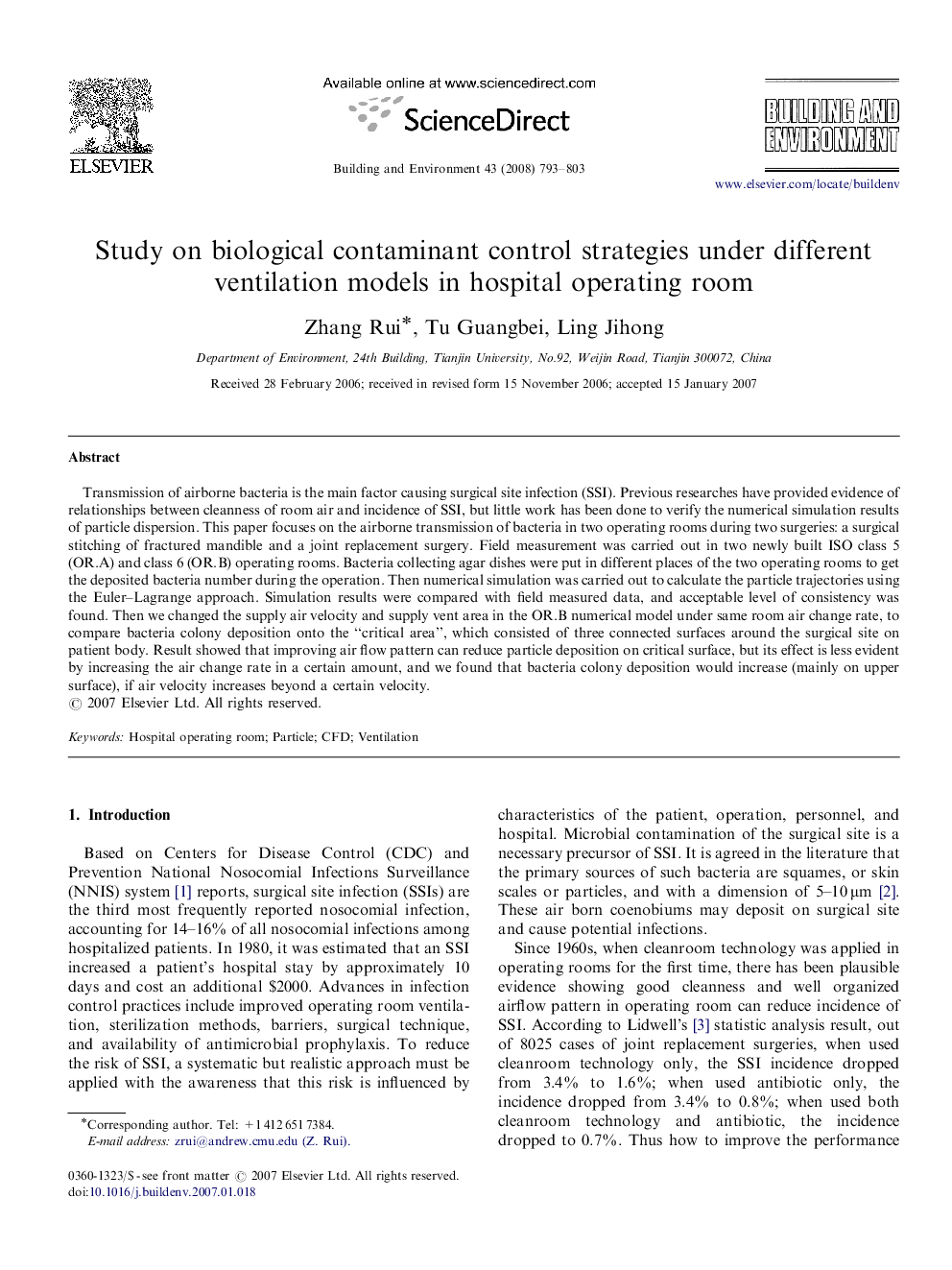| Article ID | Journal | Published Year | Pages | File Type |
|---|---|---|---|---|
| 249843 | Building and Environment | 2008 | 11 Pages |
Transmission of airborne bacteria is the main factor causing surgical site infection (SSI). Previous researches have provided evidence of relationships between cleanness of room air and incidence of SSI, but little work has been done to verify the numerical simulation results of particle dispersion. This paper focuses on the airborne transmission of bacteria in two operating rooms during two surgeries: a surgical stitching of fractured mandible and a joint replacement surgery. Field measurement was carried out in two newly built ISO class 5 (OR.A) and class 6 (OR.B) operating rooms. Bacteria collecting agar dishes were put in different places of the two operating rooms to get the deposited bacteria number during the operation. Then numerical simulation was carried out to calculate the particle trajectories using the Euler–Lagrange approach. Simulation results were compared with field measured data, and acceptable level of consistency was found. Then we changed the supply air velocity and supply vent area in the OR.B numerical model under same room air change rate, to compare bacteria colony deposition onto the “critical area”, which consisted of three connected surfaces around the surgical site on patient body. Result showed that improving air flow pattern can reduce particle deposition on critical surface, but its effect is less evident by increasing the air change rate in a certain amount, and we found that bacteria colony deposition would increase (mainly on upper surface), if air velocity increases beyond a certain velocity.
